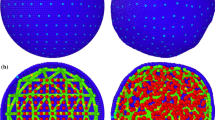Abstract
The selective isolation of a sub-population of cells from a larger, mixed population is a critical preparatory process to many biomedical assays. Here, we present a new cell isolation platform with a unique set of advantages over existing devices. Our technology, termed Immiscible Filtration Assisted by Surface Tension, exploits physical phenomena associated with the microscale to establish fluidic barriers composed of immiscible liquids. By attaching magnetically-responsive particles to a target cell population via immunocapture, we can selectively transport this population across the immiscible barrier and into a separate aqueous solution. The high interfacial energy associated with the immiscible phase / aqueous phase boundaries prevents unwanted cells or other contaminants from inadvertently crossing the immiscible phase. We have demonstrated, using fluorescent particles, stromal cells, and whole blood as “background”, that we can successfully isolate ~70% of a target breast cancer cell population with an average purity of >80%. Increased purity was obtained by coupling two immiscible barriers in series, a modification that only slightly increases operational complexity. Furthermore, several samples can be processed in parallel batches in a near-instantaneous manner without the requirement of any washing, which can cause dilution (negative selection) or significant uncontrolled loss (positive selection) of target cells. Finally, cells were observed to remain viable and proliferative following traverse through the immiscible phase, indicating that this process is suitable for a variety of downstream assays, including those requiring intact living cells.





Similar content being viewed by others
References
M.D. Abramoff, P.J. Magelhaes, S.J. Ram, Biophotonics Int. 11, 36e42 (2004)
J. Atencia, D.J. Beebe, Nature 437, 648–655 (2005)
S.M. Berry, E.T. Alarid, D.J. Beebe, Lab Chip 11, 1747–1753 (2011)
A.A.S. Bhagat, H. Bow, H.W. Hou, S.J. Tan, J. Han, C.T. Lim, Med. Biol. Eng. Comput. 48, 999–1014 (2010)
H. Bordelon, N.M. Adams, A.S. Klemm, P.K. Russ, J.V. Williams, H.K. Talbot, et al. Appl. Mater. Interfaces, (2011)
H. Chen, A. Abolmatty, M. Faghri, Microfluid. Nanofluid. 10, 593–605 (2010)
H. Cho, H.-Y. Kim, J.Y. Kang, T.S. Kim, J. Colloid Interface Sci. 306, 379–385 (2007)
A.Y. Fu, C. Spence, A. Scherer, F.H. Arnold, S.R. Quake, Nat. Biotechnol. 17, 1109–1111 (1999)
X. Hu, P.H. Bessette, J. Qian, C.D. Meinhart, P.S. Daugherty, S.T. Hyongsok, PNAS 102, 15757–15761 (2005)
L.R. Huang, C.E. Cox, R.H. Austin, J.C. Sturm, Science 304, 987–990 (2004)
D.M. Kelso, K. Sur, Z. Parpia, United States Patent Application. Application #12/395020 (2009)
A. Lenshof, T. Laurell, Chem. Soc. Rev. 39, 1203–1217 (2010)
M.P. MacDonald, G.C. Spalding, K. Dholakia, Nature 426, 421–424 (2003)
S. Miltenyi, W. Muller, W. Weichel, A. Radbruch, Cytometry 11, 231–238 (1990)
S. Nagrath, L.V. Sequist, S. Maheswaran, D.W. Bell, D. Irimia, L. Ulkus et al., Nature 450, 1235–1241 (2007)
N. Pamme, Lab Chip 6, 24–38 (2005)
N. Pamme, A. Manz, Anal. Chem. 76, 7250–7256 (2004)
F. Petersson, L. Aberg, A.-M. Sward-Nilsson, T. Laurell, Anal. Chem. 79, 5117–5123 (2007)
M. Shikida, K. Takayanagi, H. Honda, H. Ito, K.J. Sato, Micromech. Microeng. 16, 1875–1883 (2006)
K. Sur, S.M. McFall, E.T. Yeh, S.R. Jangam, M.A. Hayden, S.D. Stroupe, D.M. Kelso, J. Mol. Diagno. 12, 620–628 (2010)
W.F. Symmans, M. Ayers, E.A. Clark, J. Stec, K.R. Hess, N. Snelge et al., Cancer 97, 2960–2971 (2003)
H. Tsutsui, C.-M. Ho, Mech. Res. Commun. 36, 92–103 (2009)
P. Wildings, L.J. Kricka, J. Cheng, G. Hvichia, M.A. Shoffner, P. Fortina, Anal. Biochem. 257, 95–100 (1998)
N. Xia, T.P. Hunt, B.T. Mayers, E. Alsberg, G.M. Whitesides, R.M. Westervelt et al., Biomed. Microdevices 8, 299–308 (2006)
M. Yamada, M. Nakashima, M. Seki, Anal. Chem. 76, 5465–5471 (2004)
B. Zhao, J.S. Moore, D.J. Beebe, Science 291, 1023–1026 (2001)
Acknowledgements
This work was funded by the University of Wisconsin Stem Cell and Regenerative Medicine Center, the Walter H. Coulter Translational Research Partnership, National Institutes of Health Grant #5R33CA137673, and Department of Defense BCRP Concept Award #W81XWH-08-1-0525. J.D. Kueck is a Mary Engsberg Fellow. A portion of this work was funded by DHS Science and Technology Assistance Agreement No. 2007-ST-061-000003 awarded by the U.S. Department of Homeland Security. It has not been formally reviewed by DHS. The views and conclusions contained in this document are those of the authors and should not be interpreted as necessarily representing the official policies, either expressed or implied, of the U.S. Department of Homeland Security. The Department of Homeland Security does not endorse any products or commercial services mentioned in this publication.
Author information
Authors and Affiliations
Corresponding author
Electronic supplementary material
Below is the link to the electronic supplementary material.
Fig. S-1
The average image fluorescence of MCF-7 cells that constitutively express GFP increases linearly (R2 = 0.99) with increasing cell concentration (JPEG 20 kb)
Complete loading and operation of array of five IFAST devices (MP4 14413 kb)
Rights and permissions
About this article
Cite this article
Berry, S.M., Strotman, L.N., Kueck, J.D. et al. Purification of cell subpopulations via immiscible filtration assisted by surface tension (IFAST). Biomed Microdevices 13, 1033–1042 (2011). https://doi.org/10.1007/s10544-011-9573-z
Published:
Issue Date:
DOI: https://doi.org/10.1007/s10544-011-9573-z




